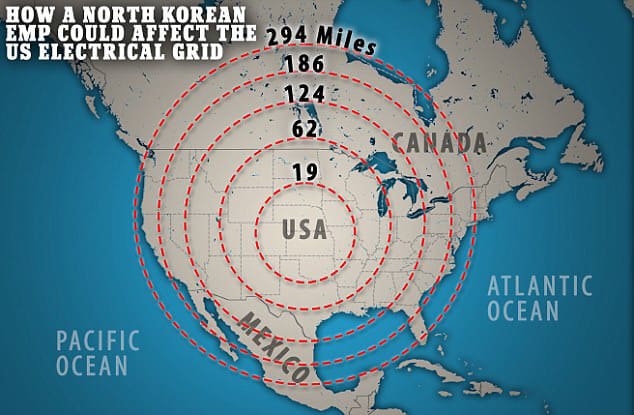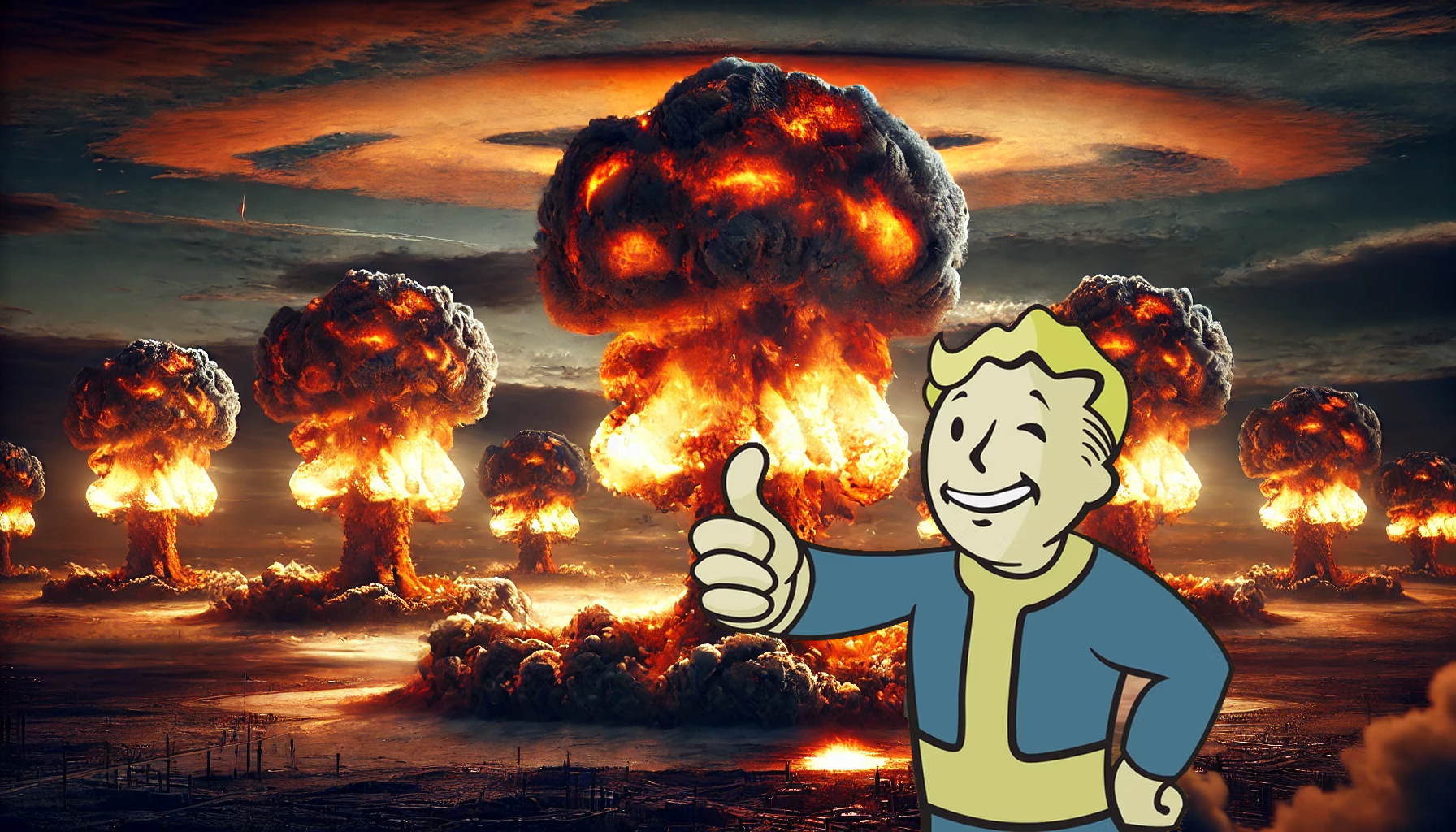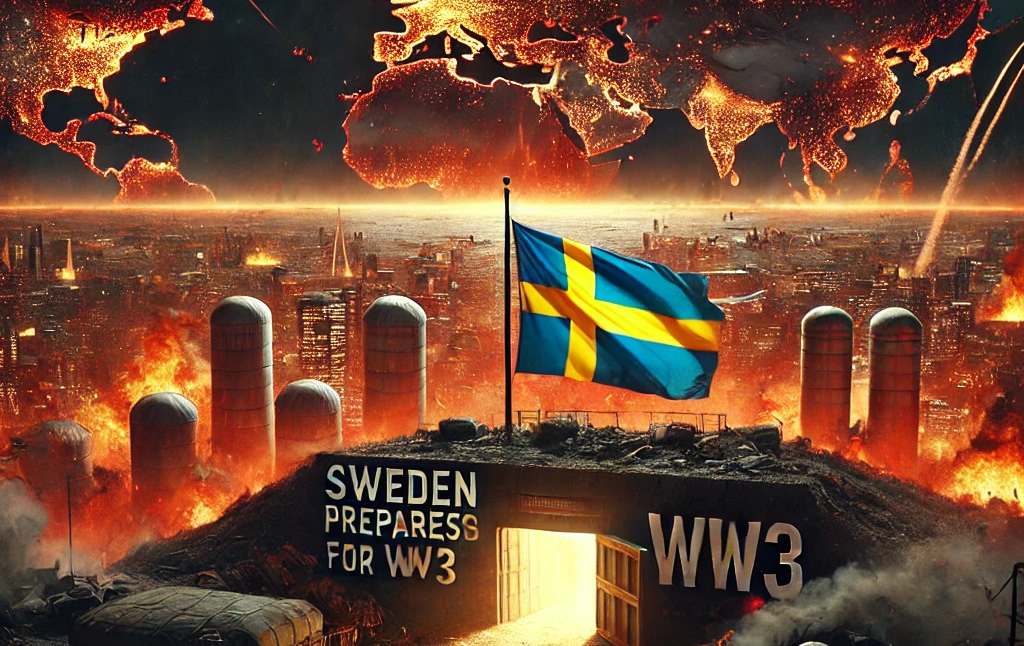It won’t start with a bang.
It’ll start with silence.
No phones.
No cars.
No power.
Just a dead sky, a quiet hum, and the rapid realization that we’re no longer the ones in control.
This isn’t science fiction. It’s not some overhyped Hollywood scenario. It’s a real threat—and North Korea knows it.
A Nuke in the Sky: The Anatomy of an EMP Attack
Let’s break it down.
An EMP—short for electromagnetic pulse—isn’t about fireballs or fallout. It’s about invisible energy that fries electronics on a national scale. All it takes is a single high-altitude nuclear detonation, roughly 30 to 300 miles above the continental U.S.
No crater. No warning.
But the effect? Catastrophic.
According to Dr. Peter Vincent Pry, a former CIA analyst and Executive Director of the EMP Task Force on National and Homeland Security, such an attack could knock out the U.S. electric grid, water systems, internet, fuel pipelines, and virtually all modern communication. Within days, society collapses. Within a year, estimates show up to 90% of the U.S. population could perish—not from the bomb itself, but from the starvation, disease, and violence that follow.
Think about that for a second. Ninety percent.
North Korea Isn’t Bluffing
North Korea has tested nuclear devices. They’ve launched ballistic missiles over Japan. And more importantly, they’ve discussed EMP capabilities as a strategic weapon—not just for destruction, but for psychological dominance.
This isn’t an enemy we can afford to underestimate. Pyongyang understands asymmetrical warfare. They know they can’t go toe-to-toe with the U.S. in a conventional sense. But an EMP? That levels the playing field.
A 2017 report by the Commission to Assess the Threat to the United States from Electromagnetic Pulse Attack made it clear: America is woefully unprepared. Our infrastructure is vulnerable. Our people are unaware. And our leadership? Distracted.
How Fast Would It All Unravel?
Faster than you think.
Airports shut down. No GPS. No functioning planes.
Banking systems collapse. No ATMs. No online transactions.
Supply chains freeze. No food deliveries. No fuel.
Water stops flowing. Sewage backs up. Hospitals fail.
Generators help—for a while. But fuel runs out. Batteries die. And without national coordination or communication, chaos takes over.
Your average city holds three days’ worth of food. Without power or resupply, urban areas become pressure cookers. Riots erupt. Law enforcement is overwhelmed. Martial law follows.
And while government officials retreat to hardened bunkers, the rest of us are left to fend for ourselves.
What History Teaches Us
Remember the Carrington Event of 1859? A massive solar storm hit Earth, frying telegraph lines and sparking fires across communication hubs. That was before digital infrastructure even existed.
Imagine a Carrington-class solar event—or a deliberate EMP—hitting our world today. Far worse.
The difference now is vulnerability. In 1859, we weren’t dependent. Today, everything is connected. Everything is fragile.
What Patriots Must Do Now
Preparedness isn’t paranoia. It’s patriotism.
We know the government won’t save us. They can’t even patch potholes without a congressional fight. When it comes to an EMP, you’re on your own. And the window for preparation is shrinking.
Start with the essentials:
- Faraday cages for electronics.
- Backups for power (solar panels, EMP-hardened generators).
- Long-term food and water storage.
- Low-tech navigation tools (maps, compasses).
- Reliable communication methods (HAM radios with EMP shielding).
You don’t need to live in fear. But you do need to live ready.
Why This Matters More Than Ever
We live in a time of increasing tension and decreasing resilience. North Korea isn’t the only threat. Russia and China both have EMP doctrines. Rogue states or terror cells could piggyback the idea.
But North Korea’s unpredictability and desperation make it a particularly dangerous wild card. When a cornered regime sees power slipping, they may go for the throat. An EMP would be a silent first strike—with no easy way to respond.
That’s why we talk about it. That’s why we prepare. That’s why we stay vigilant—because no one else will do it for us.
So don’t wait for a headline.
Be the warning.
Be the wall.
Be the one who saw it coming—and had a plan.





